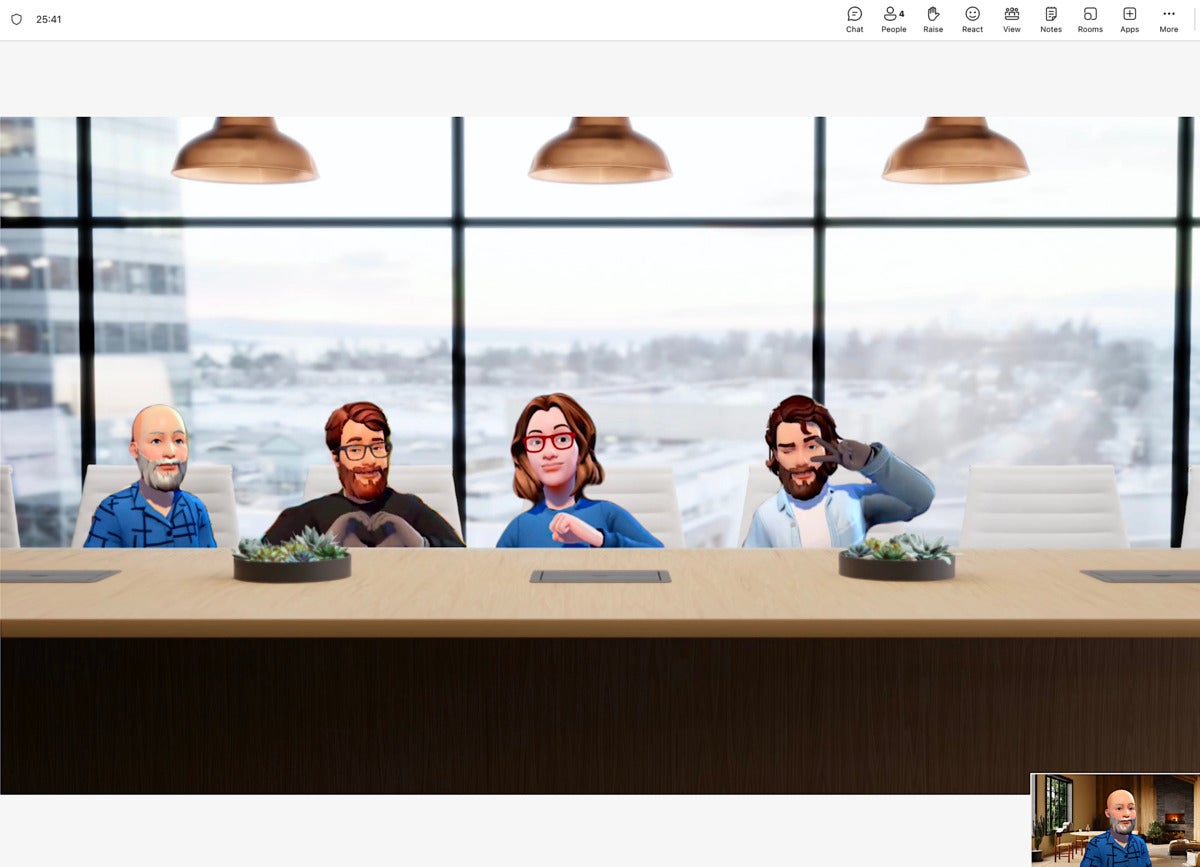Managed Everything? Vendors Shift Focus to Services

In many ways, managed detection and response (MDR) covers a lot of ground and, so far, has done well for vendors and their customers. Vendors have happy clients, exceptionally rapid growth rate, and a very high margin for the service, Pollard says. Meanwhile, businesses can focus on the threats, leading to faster detection and response. Focusing on the data could improve the response time, but that is far from certain. However, no matter what telemetry, data, or devices a detection and response service focuses on to detect threats, businesses just want to focus on outcomes — detecting threats and preventing compromises, says Eric Kokonas, vice president at Sophos. "The truth is that the best applications of MDR are the result — not of strict adherence to a defined set of tools, telemetry sources, and services — but of an adaptable range of human-led capabilities that can be delivered and consumed in ways that are most compatible with organizations' needs and that are most likely to achieve the organizations' desired outcomes," Kokonas says. "Put more plainly, MDR services exist to achieve security and business outcomes the most optimal way possible."
Meetings are about to get weird

And if you want nothing to do with it, I’ve got bad news: Apple Vision Pro users will be showing up soon in meetings as what Apple calls “Personas,” which are CGI-looking video representations that approach, but don’t cross into, the “uncanny valley” (that place of realism where a digital human or robot starts to creep people out). Critics are slamming the appearance of these “Personas,” but like all things, Apple will no doubt make them better with each iteration. Video meeting leader Zoom announced recently that the company’s flagship product will support Apple Vision Pro avatars with a new visionOS Zoom app. You’ll be able to remove meeting participants’ backgrounds and “pin” their real-time hologram anywhere in your physical workspace. ... The practice of using avatars in meetings will offer a huge advantage to employees with disabilities. Companies like Lenovo are spearheading the use of AI avatars to enable employees who otherwise might not be able to attend meetings. Once your visage has been digitized, there are other advantages. Lenovo developed a feature demonstrated at CES that enables you to step away from a meeting and have a digital version of yourself remain in the meeting, blinking and nodding as others talk.
The Linux Foundation and its partners are working on cryptography for the post-quantum world

Part of PQCA's mission is its commitment to the practical application of
post-quantum cryptography. The alliance will spearhead technical projects, such
as developing software for evaluating, prototyping, and deploying new
post-quantum algorithms. In other words, the alliance seeks to bridge the gap
between theoretical cryptography and its real-world implementation. One of
PQCA's launch projects is the Open Quantum Safe project, which was founded at
the University of Waterloo in 2014 and is one of the world's leading open-source
software initiatives devoted to post-quantum cryptography. PQCA will also host
the new PQ Code Package Project, which will build high-assurance,
production-ready software implementations of forthcoming post-quantum
cryptography standards, starting with the ML-KEM algorithm. All this effort
matters because quantum computing is very much a mixed blessing. As Jon Felten,
Cisco Systems' senior director of trustworthy technologies, said: "Quantum
computing offers the potential to solve previously unapproachable problems,
while simultaneously threatening many digital protections we take for granted."
Rethinking digital transformation beyond traditional verticals
The challenge extends beyond emerging markets, as Philippe points out, citing
the global impact of the COVID-19 pandemic. “Many people in so-called richer
countries are still deprived of access to life-changing digital services as are
many people in so-called poorer countries,” he observes. The barriers include a
lack of hardware to get access to such digital services, and training to use
those services. However, Philippe is optimistic, noting that the necessary
technology already exists and can significantly contribute to at least 8 of the
17 SDGs. “We have the data—we know what works and what doesn’t. Now, we need to
scale this knowledge,” Philippe urges. He emphasizes the importance of
collaboration, echoing the sentiment of the World Bank Group President, Ajay
Banga, to replicate with pride. The goal is to ensure that the majority of each
country’s population is not only aware of these services but also has easy
access and knows how to utilize them. In expressing gratitude for the accolade
received for the collective development work, Philippe acknowledges the
contributions of partners, colleagues and thousands of committed
individuals.
Best practices for API error handling

Developers often run into errors during the API integration process. These
errors might be caused by an incorrect implementation, a user action, or an
internal server error on the API itself. It is important that developers handle
these errors properly and present them to end-users in a direct, non-technical
manner. The following best practices can lay the foundation for successful error
handling during API integration—regardless of the API’s architectural
pattern:Validate user input: Users sometimes provide invalid input data, which
can lead to errors. Client-side validations help prevent this issue. Validations
not only ensure that the user can see and fix the problem quicker, but also help
the client and server conserve resources that would otherwise be expended on
extra network traffic. Provide user-friendly messages: It’s important to avoid
presenting error messages from the server directly to the end-user. Instead,
these technical error messages should be simplified and made more user-friendly.
They should also clearly tell the user how to fix the error. Handle multiple
edge cases: Developers should understand the full range of errors an API can
produce so that they can handle every edge case.
Agile myths busted by Adaptavist

"Agile doesn't scale" - This is a subject of ongoing debate in the Agile
community. Many believe that the core tenets of Agile, like flexibility,
customer focus, and valuing individuals over process fall when applied to large
departments or organizations. In addition, scaling is often hindered by lousy
architecture that breeds excessive dependencies and effort, which is exacerbated
by creating dozens of teams. While Agile may seem daunting, starting small is
key - after all, if you cannot be agile when the teams are small, scaling that
non-agile approach is not likely to end well. Whether applying Agile to an
individual team or department, focus on tangible successes and learn from any
failures. Let teams discover effective practices rather than mandating rigid
standards. ... "There's one way to be Agile" - No universal standards
exist. However, you can use the values and principles as guides for discussing
how well your form of agile aligns with the Agile Manifesto. Your context
matters, which is the intent behind the ambiguity about relative value between
"the items on the left and the right." View existing frameworks as pointers that
teams can selectively apply, rather than use them as proscriptive dogma. As your
contexts evolve, so too must your agile practices.
Entrepreneurship for Engineers: Open Source Company Ethics

As the founder of a company, you have a series of ethical obligations to
different stakeholders, both in your business as well as personal relationships,
said Matt Butcher, co-founder and CEO of Fermyon, who also has a doctorate in
philosophy. You have an ethical obligation to yourself to not burn out; you have
an ethical obligation to your family to not neglect them, financially or
otherwise. If you’re working 80-hour weeks, so busy you forget to pick up your
kids from school and are living in poverty, you aren’t behaving ethically toward
yourself or your family. When you’re running a business, you also have an
ethical responsibility to your employees — as well as a legal responsibility.
... And then there are questions about data collection. Sometimes things can
happen accidentally; you have a privacy-first project but have Google analytics
embedded on your website, for example. “There are some people who will tell you
that you are just evil because you say something, but you don’t do what you
pretend to be,” said Gaël Duval, CEO of Murena, a de-Googled smartphone
company.
10 best practices for implementing an effective data governance framework
Data governance isn’t just the mandate of the IT team, nor is it the sole
responsibility of the legal department. Everyone must work together to make data
governance an organizational priority. Creating a data governance council can
ensure representation from all lines of business plus those stakeholders
responsible for compliance, eDiscovery, and other data-related concerns. The
council should be responsible for making key decisions, resolving conflicts, and
updating the framework. ... Obtaining buy-in from executives is essential to the
success of any initiative. Executive sponsorship not only ensures you have the
resources necessary to support your program but also signals a commitment to
prioritizing data governance throughout the organization. Establishing a direct
line of communication can also help you overcome potential challenges during
implementation. ... You can’t optimize your data if you don’t know where
it is. Create a comprehensive data map that outlines where your data is stored,
how it flows through various systems, and how data sets are related to one
another. This visual representation not only enhances transparency but also aids
in identifying potential data risks and dependencies.
The Rise of “Quick and Dirty” DR Testing

IT/DR testing is still alive and well; however, these days it has evolved toward
what you might call a “quick and dirty” approach. Quick because contemporary
exercises place a strong emphasis on brevity in recognition of the new reality
of employees’ shortened attention spans. Dirty because modern testing
deemphasizes preparation and focuses on making exercises adhere as closely as
possible to real-world conditions. Among the other new aspects of contemporary
IT/DR tests is a new respect for the benefits of tabletop exercises. Necessity
is the mother of invention, and the necessity of letting go of the traditional
multi-day exercise has been driving productive innovations in the design and
execution of tabletops. (MHA’s Richard Long has been a pioneer in this area,
with his one-hour exercises focusing on a particular app or IT service and
requiring participants to think on their feet.) These innovations have unlocked
new powers in the tabletop in terms of identifying gaps and training staff.
Other contemporary innovations include a focus on varying levels of testing
complexity, the use of multiple strategies, the rise of tiered testing, and the
development of methods to test today’s hybrid apps.
Are You a Lost Leader? Get Back on Track By Following These 4 Tips to Lead With Strength and Conviction
To lead well also requires you to walk the talk. It is important to apply your
core values to leading yourself. For example, if one of your values is setting
boundaries and making time for things that bring you joy, then be protective of
that time. As CEO, I have demands of my time for nearly every hour of the day.
In a hybrid and remote world, it's increasingly difficult to create healthy
boundaries of time and space as there are often expectations to be on 24/7.
Establishing boundaries to prioritize time for my family is non-negotiable. That
time allocation might fluctuate in different seasons, depending on the needs of
my family and the needs of business, but in the spirit of recognizing my core
values, it certainly makes it to the top when priorities are determined. ...
Owning your own choices is another key part of staying true to your values. It's
important to understand what your true north is and hold yourself accountable
for your choices — even when the path can be harder. I can't tell you the number
of times people have asked, "How do you travel so much?" or "Why did you have
kids if you were going to take a job like this?" First of all— wow.
Quote for the day:
“You live longer once you realize that
any time spent being unhappy is wasted.” -- Ruth E. Renkl
No comments:
Post a Comment